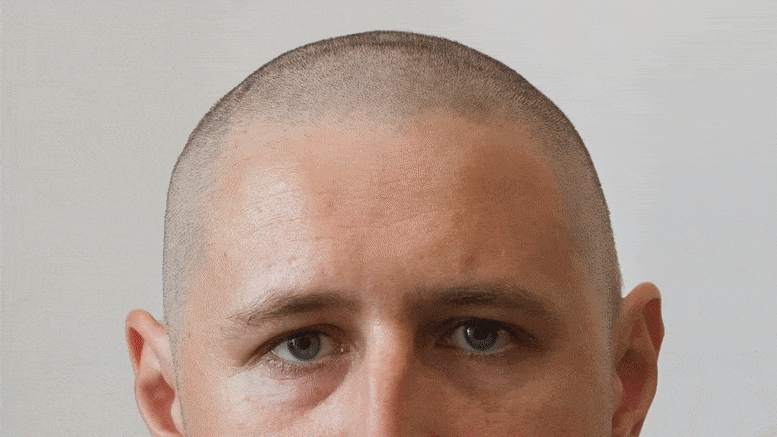Scientists at Northwestern Medicine have made a remarkable discovery that could revolutionize the treatment of baldness in aging individuals. Through their research, they found that the stiffness of hair follicle stem cells plays a significant role in hindering hair growth. However, their breakthrough lies in the ability to soften these cells using a minuscule RNA called miR-205, which has shown remarkable potential in stimulating hair growth, as observed in mice. The next phase of their study will explore the application of topically delivered miR-205 to promote hair growth in humans.
Innovative Approach: Softening Stem Cells with MicroRNA for Hair Regrowth
Similar to aging joints causing mobility issues, hair follicle stem cells also experience stiffness with age, impeding hair growth. The recent study conducted by Northwestern Medicine shed light on a groundbreaking method to address this problem. By softening the stem cells, researchers discovered that the likelihood of hair production significantly increased.
In their investigation, published in the prestigious journal PNAS, scientists genetically manipulated the stem cells in mice to produce higher levels of miR-205. This tiny RNA effectively relaxed the stiffness of the cells, leading to noticeable hair growth in both young and old mice. The results were remarkable, with hair growth observed within a mere 10-day period.
Exciting Prospects: Delivering MicroRNA via Nanoparticles for Hair Growth
Rui Yi, the corresponding author of the study and an esteemed professor at Northwestern University Feinberg School of Medicine, elaborated on the findings. He explained that the researchers were stimulating existing stem cells to promote hair growth, rather than generating new stem cells. Oftentimes, individuals still possess stem cells that can no longer generate hair.
The study demonstrates the potential to stimulate hair growth by regulating cell mechanics. With the ability to deliver microRNA directly into the skin using nanoparticles, the next step involves testing the effectiveness of topically applied miR-205 in stimulating hair growth in mice. If successful, the researchers plan to design experiments to determine whether this microRNA can be utilized to promote hair growth in humans.
Scientific Advancements: Measurement and Monitoring Techniques
The study relied on genetically engineered mouse models to conduct their research. The team employed advanced microscopy tools, including atomic force microscopy to measure cell stiffness and two-photon microscopy to observe cell behaviors in live animals. These cutting-edge techniques provided crucial insights into the effects of miR-205 on hair follicle stem cells.
The study received funding from various grants awarded by the National Institute of Arthritis and Musculoskeletal and Skin Diseases, including AR066703, AR071435, AR043380, AR041836, and P30AR075049 from the National Institutes of Health.
With its potential to address baldness, this groundbreaking research marks a significant step forward in the field of hair growth and could have profound implications for those struggling with hair loss.
Table of Contents
Frequently Asked Questions (FAQs) about Hair Growth
What did the Northwestern Medicine scientists discover about hair growth in aging follicles?
The Northwestern Medicine scientists discovered that the stiffness of aging hair follicle stem cells hinders hair growth. Softening these cells using a tiny RNA, miR-205, was found to stimulate hair growth in mice.
How did the scientists soften the hair follicle stem cells?
The scientists genetically manipulated the stem cells to produce more miR-205, a tiny RNA. This boosted the production of miR-205, which effectively relaxed the stiffness of the cells and promoted hair growth in both young and old mice.
What are the potential implications of this research for humans?
The potential implications of this research for humans are promising. The next step involves testing whether topically delivered miR-205 can stimulate hair growth in mice. If successful, further experiments will be designed to determine if this microRNA can be used to promote hair growth in humans.
How quickly did hair growth occur in the mice during the study?
Hair growth was observed within just 10 days in the mice during the study. This quick turnaround indicates the potential effectiveness of the miR-205 treatment in stimulating hair growth.
What techniques did the scientists use in their study?
The scientists used advanced microscopy tools, such as atomic force microscopy and two-photon microscopy, to measure the stiffness of cells and monitor cell behaviors in live animals. These techniques provided valuable insights into the effects of miR-205 on hair follicle stem cells.
How was the study funded?
The study received funding from grants awarded by the National Institute of Arthritis and Musculoskeletal and Skin Diseases. These grants included AR066703, AR071435, AR043380, AR041836, and P30AR075049 from the National Institutes of Health.
More about Hair Growth
- Northwestern Medicine
- PNAS – Proceedings of the National Academy of Sciences
- National Institute of Arthritis and Musculoskeletal and Skin Diseases
- National Institutes of Health



5 comments
Wow, this new study on hair growth is super interesting! They found a tiny RNA that makes hair grow in old folks. Can you believe it?
Finally, a breakthrough for baldness! Those stiff stem cells were stopping hair growth, but now they found a way to soften ’em up. Goodbye, bald spots!
So they’re gonna try putting this microRNA stuff on our scalps to grow hair? Sounds kinda cool. Wonder if it’ll work for humans like it did for mice. Fingers crossed!
This study is next-level! They used fancy microscopes to see how the stem cells get all stiff. And then they used their magic RNA to make the cells soft again and grow hair. Science rocks!
Can you imagine having a full head of hair in just 10 days?! I’m totally keeping an eye on this miR-205 thing. If it works for us humans, it’ll be a game-changer. No more bad hair days!